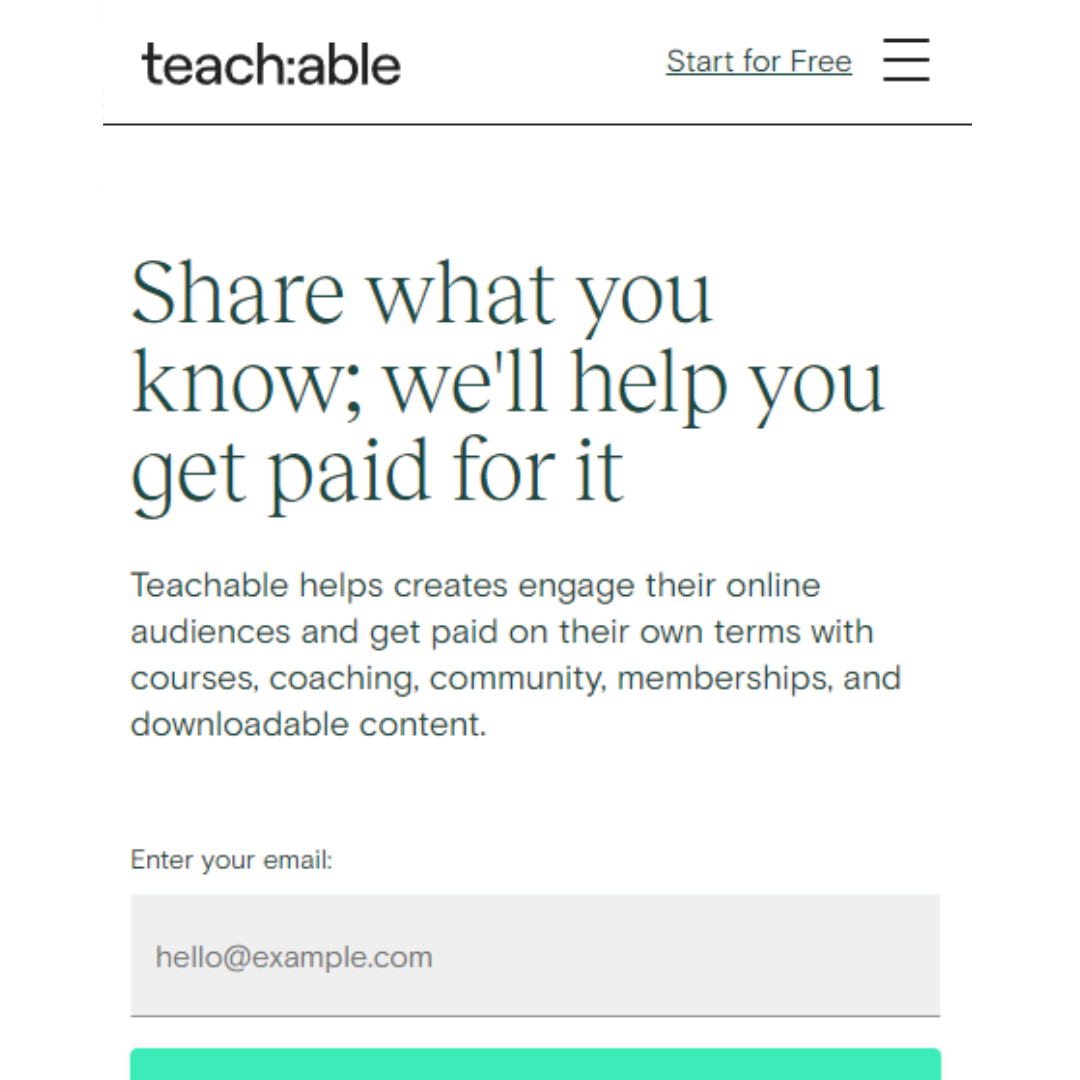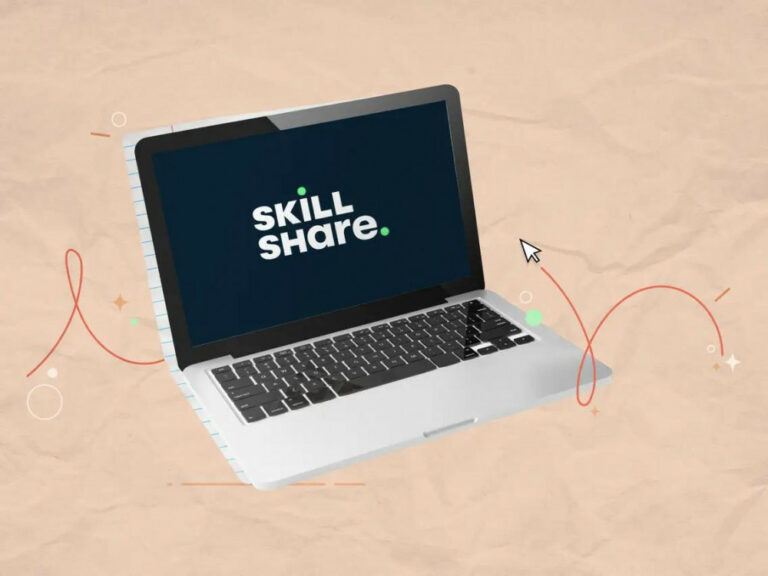A Guide To Finding The Best Online Teaching Platforms

A Guide To Finding The Best Online Teaching Platforms
In a world where virtual connectivity has become the norm, the demand for innovative online teaching platforms has skyrocketed.
As technology revolutionizes education, students and educators seek dynamic tools to enhance the learning experience beyond traditional classrooms.
From interactive whiteboards to real-time collaboration features, the best online teaching platforms offer many resources to engage learners and facilitate effective teaching practices.
Whether you're a student excited to try new learning methods or an experienced teacher wishing to modify your classes for an online audience, this in-depth guide will lead you through some of the top online teaching platforms, changing the face of education.

What Is An Online Teaching Platform?
An online teaching platform is a digital tool or software designed to facilitate the delivery of educational content and instruction over the Internet.
These platforms provide a virtual environment where educators can remotely create, manage, and deliver courses to students.
They typically offer features such as video lectures, interactive assignments, discussion forums, and assessment tools.
One key benefit of the best online teaching platforms is their flexibility. They allow students to access educational materials and participate in learning activities from anywhere with an internet connection.
Want to Start Making Money Online?
Try My #1 Recommendation Program!
This flexibility is especially valuable for learners with scheduling constraints or other commitments that prevent them from attending traditional in-person classes.
Moreover, online teaching platforms often incorporate multimedia elements like videos, animations, and simulations to improve instruction and accommodate various learning preferences.
Additionally, many platforms offer analytics and reporting tools that enable educators to track student progress, identify areas for improvement, and provide personalized feedback.
Overall, online teaching platforms have become essential tools for educators and learners, offering convenience, accessibility, and innovative features to support effective online learning experiences.
Why Online Teaching Platforms Became Popular
Online teaching platforms have become popular for several reasons.
Firstly, they offer unparalleled convenience and flexibility. Students can study at their own speed and on their schedule by accessing various courses from any location with an internet connection.
Secondly, online teaching platforms often offer diverse subjects and courses catering to various interests and skill levels. This variety appeals to learners seeking specific knowledge or exploring new areas.
Moreover, online platforms often employ interactive and multimedia-rich content, enhancing the learning experience compared to traditional methods.
Want to Find Out How To Start Your Home-Based Business?
Try My #1 Recommendation Platform!
Features such as videos, quizzes, and discussion forums engage learners and facilitate better comprehension and retention of information.
Additionally, the scalability of online teaching platforms allows for widespread access to education, breaking down barriers like geographical limitations and high costs associated with traditional education.
Furthermore, the COVID-19 pandemic accelerated the adoption of online teaching platforms as schools and institutions worldwide shifted to remote learning.
This crisis underscored the importance of digital learning tools and their effectiveness in ensuring the continuity of education during challenging times.
Overall, the combination of convenience, variety, interactivity, scalability, and adaptability to changing circumstances has propelled the popularity of online teaching platforms.
The Best Online Teaching Platforms
The Best Online Teaching Platforms encompass a range of digital tools designed to facilitate remote learning and instruction.
These platforms have interactive whiteboards and virtual classrooms, real-time communication tools, and assessment capabilities among their capabilities.
They provide educators with the means to deliver engaging and effective lessons to students regardless of their physical location.
With user-friendly interfaces and robust functionalities, the best online teaching platforms empower educators to create dynamic learning experiences and foster student engagement in the digital realm.

1. Udemy
Udemy stands out as one of the leading online teaching platforms, offering various courses across various subjects.
Its user-friendly interface sets Udemy apart, allowing both instructors and students to navigate seamlessly through the platform.
With a vast selection of classes ranging from tech-related fields to personal development, Udemy caters to a diverse audience seeking to enhance their skills and knowledge.
Udemy’s affordability and accessibility make it an attractive option for those learning at their own pace and convenience.
The platform enables individuals worldwide to connect and engage in virtual learning experiences.
Overall, Udemy provides quality content delivered by expert instructors, making it a top choice for anyone eager to delve into online education.
Pros And Cons Of Udemy
Pros Of Udemy
- Wide range of courses covering various subjects and topics.
- Affordable pricing for individual course purchases.
- Lifetime access to purchased courses with no expiration date.
- Instructors can create and publish their courses.
- User-friendly interface with features like progress tracking and quizzes.
Cons Of Udemy
- The quality of courses can vary, with some needing more depth or expertise.
- Limited interaction between students and instructors compared to live classes.
- Courses may only sometimes be regularly updated to reflect the latest information.
- No official accreditation or certification is required to complete courses.
- Some courses may have outdated content or technology that is irrelevant.

2. Skillshare
Because of its wide range of courses and vibrant community, Skillshare is among the top online learning environments.
With over 30,000 classes available on design, photography, and entrepreneurship, Skillshare provides a platform for beginners and experts to learn and share their skills.
Project-based learning, which enables students to apply what they've learned in real-world situations, distinguishes Skillshare.
Are You Tired Of Scams?
Try The Most-Trusted Training Platform To Make Money Online!
Moreover, Skillshare’s interactive nature fosters user collaboration, encouraging them to engage through feedback and discussions.
This enhances the learning experience and creates a supportive environment for personal growth. Skillshare gives you plenty of chances to increase your knowledge and meet like-minded people, whether your goal is to learn a new hobby or advance your professional abilities.
Pros And Cons Of Skillshare
Pros Of Skillshare
- Offers a wide variety of online classes on different topics.
- Allows users to learn at their own pace and convenience.
- Encourages interaction and collaboration among students through projects.
- Provides affordable subscription plans for unlimited access to courses.
- It gives opportunities for teachers to earn money by creating and sharing courses.
Cons Of Skillshare
- The quality of courses may vary depending on the instructor.
- Limited interactive features compared to other online teaching platforms.
- Lack of accreditation for completed courses.
- Some courses must be regularly updated with current information or trends.
- It May require strong self-discipline and motivation from students due to the self-paced nature of learning on the platform.

3. Thinkific
Thinkific is one of the best online teaching platforms, with a user-friendly interface and customizable course options.
One unique feature of Thinkific is its ability to integrate seamlessly with other tools like Google Analytics and MailChimp, making it easier for instructors to track student progress and communicate effectively.
Another advantage of using Thinkific is its extensive library of design templates, allowing instructors to create visually appealing courses without needing advanced design skills.
Furthermore, Thinkific offers robust marketing tools like email integration and affiliate program management, helping instructors reach a wider audience and increase course sales.
Moreover, the platform offers comprehensive analytics and reporting tools that let teachers track student participation rates and pinpoint areas where their classes need work.
With its comprehensive features and user-friendly interface, Thinkific has become a top choice for educators seeking to create engaging online courses efficiently.
Pros And Cons Of Thinkific
Pros Of Thinkific
- User-friendly interface that makes creating and customizing online courses easy.
- Offers a variety of multimedia options for course content, such as videos, quizzes, and downloads.
- Integrated tools for marketing and selling courses, including payment processing and email automation.
- Allows for unlimited students and courses on all pricing plans.
- Provides excellent customer support through live chat, email, and webinars.
Cons Of Thinkific
- Limited customization options for the course player interface.
- Lacks built-in interactive features like live webinars or community forums.
- Pricing plans can be expensive compared to other online teaching platforms.
- Limited options for gamification elements to enhance student engagement.
- Some users have reported occasional technical issues with the platform’s performance and reliability.

4. Teachable
Because of its vast customization possibilities and user-friendly design, Teachable is one of the best online teaching platforms.
With Teachable, instructors can easily integrate multimedia content and interactive quizzes into their courses to create a personalized learning experience for their students.
This flexibility allows educators to engage with learners uniquely and innovatively, enhancing the educational experience.
Teachable also has strong analytics capabilities that give insightful data on student performance and course efficacy.
To continually improve their teaching strategies, educators may monitor student progress, evaluate learning objectives, and make data-driven decisions.
The platform is a great option for educators who want to increase their online teaching presence. Its marketing tools help it sell its courses more efficiently and reach a larger audience.
Teachable provides a comprehensive solution for educators looking to create high-quality online courses that deliver tangible results.
Its intuitive design, customization options, and powerful analytics make it a top choice among the best online teaching platforms for beginners and experienced instructors.
Pros And Cons Of Teachable
Pros Of Teachable
- User-friendly interface, making it easy to create and manage courses.
- Customizable design options to personalize course content for students.
- Integrated payment processing for seamless monetization of courses.
- Ability to track student progress and performance with analytics tools.
- Provides marketing and sales features to help promote courses and increase enrollments.
Cons Of Teachable
- There are fewer customization options than on other platforms.
- Transaction fees on lower-tier plans can eat into profits for course creators.
- Limited customer support hours may lead to delays in resolving issues.
- Lack of built-in live teaching tools, requiring external software for real-time interaction.
- Some advanced features are only available on higher-priced plans, potentially increasing costs for users with specific needs.

5. The Leap
The emergence of the best online teaching platforms has revolutionized how we learn and educate.
Platforms like Coursera, Udemy, and Khan Academy offer diverse courses, allowing learners to upskill from their homes.
What sets these platforms apart is the interactive nature of their classes, engaging students through live sessions, quizzes, and group activities.
Moreover, the flexibility offered by online teaching platforms caters to individuals with varying schedules and preferences.
Students can access course materials at any time, making learning more accessible than ever before.
As technology advances, the best online teaching platforms are likely to play a significant role in shaping the future of education by providing innovative learning solutions for a diverse global audience.
Pros And Cons Of The Leap
Pros Of The Leap
- Offers interactive and engaging virtual classrooms.
- Provides a variety of teaching tools and resources for educators.
- Allows for accessible communication and collaboration between students and teachers.
- Offers flexibility in scheduling classes and accessing course materials.
- Incorporates advanced technology to enhance the learning experience.
Cons Of The Leap
- It may require a learning curve for new users to navigate the platform effectively.
- Some features may be limited or less robust than other online teaching platforms.
- Possible technical glitches or connectivity issues during live sessions.
- Pricing may be higher compared to similar platforms in the market.
- They have limited customization options for individualized teaching approaches.

6. Podia
As one of the greatest online learning environments, Podia stands out for its extensive feature set and easy-to-use UI.
One key feature that sets Podia apart is its all-in-one platform, which allows instructors to create, host, and sell their courses in one place.
This seamless integration streamlines the teaching process for educators and students alike.
Another standout aspect of Podia is its flexibility in pricing and payment options. Instructors can set their prices for courses, memberships, or downloads, giving them control over their revenue streams.
Want To Learn How To Create Your Own Website And Online Business?
Try My #1 Recommendation Training And Hosting Platform!
Podia is an affordable option for online instructors since it provides safe payment processing without transaction costs.
Podia’s user-friendly design and customizable features make it a top choice for instructors looking to share their knowledge with students worldwide.
Pros And Cons Of Podia
Pros Of Podia
- Podia offers a user-friendly interface that is easy to navigate for both teachers and students.
- The platform allows instructors to create and sell online courses, digital downloads, and memberships all in one place.
- Podia provides excellent customer support with live chat assistance and helpful resources for users.
- The platform offers branding and course design customization options to create a personalized learning experience.
- Podia has built-in email marketing tools to help instructors communicate with their students effectively.
Cons Of Podia
- Some users have reported limitations in terms of customization compared to other online teaching platforms.
- Instructors just starting out or on a tight budget may consider Podia's pricing structure expensive.
- The platform does not offer built-in assessment or quiz features, which may be a drawback for instructors looking for interactive course elements.
- Limited integration options with third-party tools or software compared to online teaching platforms.
- Podia needs advanced analytics and reporting capabilities, which may make it challenging for instructors to track student progress effectively.
Different Ways To Teach In The Best Online Teaching Platforms
Teaching online offers many possibilities for engaging students and facilitating learning. Here are various methods and techniques for teaching effectively online:
1. Live Lectures
Conduct real-time lectures through video conferencing tools like Zoom, Google Meet, or Microsoft Teams. This allows for direct interaction and immediate clarification of doubts.
2. Recorded Lectures
Pre-record lectures and share them with students. This allows students to access the material conveniently and revisit the content as needed.
3. Interactive Presentations
Use platforms like Google Slides, Prezi, or PowerPoint with interactive features to engage students actively during presentations. Incorporate polls, quizzes, and discussions to keep students involved.
4. Discussion Forums
Set up online discussion boards or forums where students can discuss topics, ask questions, and collaborate with peers. Platforms like Moodle, Blackboard, or even dedicated subreddit threads can facilitate this.
5. Virtual Labs And Simulations
Utilize virtual lab environments or simulations to provide hands-on learning experiences in subjects like science, engineering, or computer programming. Tools like Labster, PhET Interactive Simulations, or virtual dissection software can be beneficial.
6. Collaborative Document Editing
Use collaborative tools like Google Docs, Microsoft Office Online, or Notion for real-time collaboration on documents, presentations, or projects. This fosters teamwork and enables students to work together seamlessly.
7. Online Assessments
Implement various online assessments such as quizzes, assignments, essays, or peer reviews using learning management systems (LMS) like Moodle, Canvas, or Blackboard. These platforms offer features for creating and grading assessments efficiently.
8. Virtual Field Trips
Explore virtual field trip opportunities where students can visit museums, historical sites, or natural landmarks virtually.
Platforms like Google Arts & Culture, National Geographic, or virtual reality experiences can provide immersive learning experiences.
9. Flipped Classroom Model
Flip the traditional classroom model by assigning pre-recorded lectures or readings for students to review before synchronous online sessions. Use class time for discussions, activities, and clarification of concepts.
10. Guest Speakers and Webinars
Invite guest speakers or experts in the field to conduct webinars or Q&A sessions with students. This provides additional perspectives and insights beyond the course material.
11. Peer Teaching And Group Projects
Encourage peer teaching and collaborative group projects where students can learn from each other and develop teamwork skills. Assign roles and facilitate online meetings for effective collaboration.
12. Adaptive Learning Platforms
Utilize adaptive learning software that personalizes learning pathways based on students' strengths, weaknesses, and learning pace. Platforms like Khan Academy, Duolingo, or adaptive textbooks offer tailored learning experiences.
13. Gamification
Integrate game elements such as leaderboards, badges, or points to incentivize learning and increase engagement. Platforms like Kahoot!, Quizizz, or educational games can make learning more interactive and enjoyable.
14. Microlearning
Break down lessons into bite-sized chunks or modules for easier digestion and retention. Deliver content through short videos, infographics, or quizzes for quick learning moments.
15. Feedback And Communication
Provide regular feedback on students' progress and encourage open communication channels through emails, discussion forums, or office hours to address concerns and questions effectively.
Conclusion
As we come to the end of our exploration of the best online teaching platforms, it is evident that the digital learning landscape is evolving rapidly.
Because of their distinctive qualities and ability to meet various demands, the platforms discussed in this article facilitate instructors' ability to engage students in creative learning.
But it's crucial to remember that technology is only a tool and that enthusiasm, ingenuity, and commitment are still necessary for good teaching.
The key takeaway from this discussion is the importance of adaptability. Educators must be willing to embrace new technologies and methodologies to stay relevant in an ever-changing educational environment.
The best Online teaching platforms provide collaboration, personalization, and global reach opportunities that can enhance the teaching experience and student learning outcomes.
By harnessing these tools effectively, educators can create dynamic and engaging learning experiences that prepare students for success in the digital age.
I trust you enjoyed this blog post on A Guide To Finding The Best Online Teaching Platforms. Please stay tuned for more articles like this. Take care!
JeannetteZ
Want to Learn How to Build Your Own Home-Based Online Business and Start Making Money Online From Your Comfortable Couch?
Try Wealthy Affiliate!
Your Opinion Is Important To Me
Do you have thoughts, ideas, or questions? I would love to hear from you. Please leave me your questions, experiences, remarks, and suggestions on A Guide To Finding The Best Online Teaching Platforms article in the comments below. You can also email me at Jeannette@WorkFromAnywhereInTheWorld.com.
Disclosure
This post may contain affiliate links. I earn from qualifying purchases as an Amazon Associate and other affiliate programs. Please read my full affiliate disclosure.
You might also enjoy the following blog posts:
Wealthy Affiliate Review – Scam or Legit? The Truth Exposed
7 Tips On How To Prepare For Teaching Online
How To Become An Online Teacher
Affiliate Marketing For Digital Products







